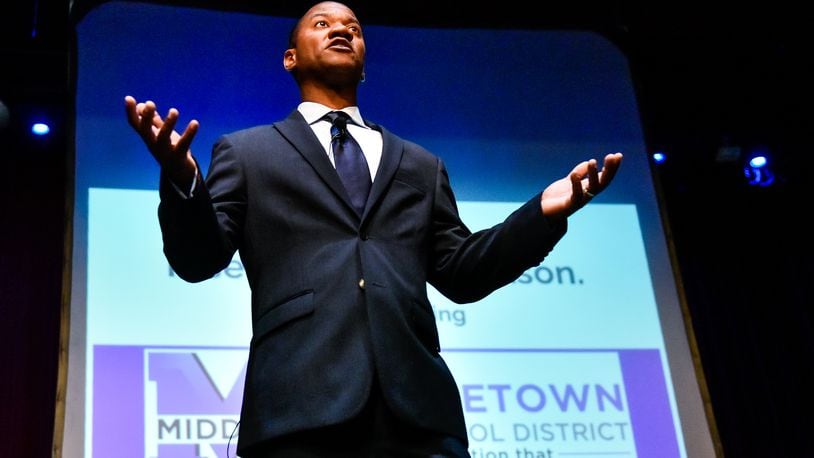Here’s a closer look at what it may mean for the 6,300-student district:
1. More social media activity
One aspect of the strategy, Styles said, calls for teachers and other school staffers to become more active on social media in reaching out to the public about Middletown Schools’ successes – already a point of emphasis Styles has applied to himself.
“Social media is something we are doing for a purpose,” he said.
2. Use student data wisely
“We need to modernize and we need to become a data-literate culture. We can talk about anything, but if we are not talking about what the data tells us – then shame on us,” he said.
“Technology alone will not raise our test scores, but the power of your instruction will,” said Styles, who previously was the executive director of curriculum and instruction for Lakota Schools.
3. An environment of success
When all Middletown students return to classes on Aug. 22, those at the high school will see a radically modernized building.
The $96 million project, which is expanding and renovating the high school and building a new, adjacent middle school, is nearing the end of the first of three construction stages.
Many of the students will be learning in some of the most technologically sophisticated classrooms in the region. As the construction continues through the 2017-2018 school year, more student learning spaces and a new prep sports arena will open for use.
4. A plan for turnaround
And after much public discussion, a new strategic plan was adopted by the Middletown school board this year in hopes of serving as a blueprint for turnaround of the district.
The plan includes goals in five areas: student achievement; instructional excellence; valuing diversity; communications and community engagement and student and family wellness.
5. So where will it all lead?
Styles predicted the school system, which has traditionally been one of the lowest performing districts in Southwest Ohio according to annual state report cards, will improve dramatically.
“I think we will be one of the best districts in the state in five years,” he said. “It will be bumpy along the way, but we are stronger together.”
About the Author
